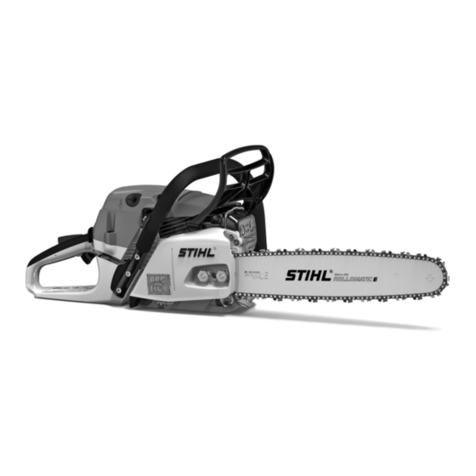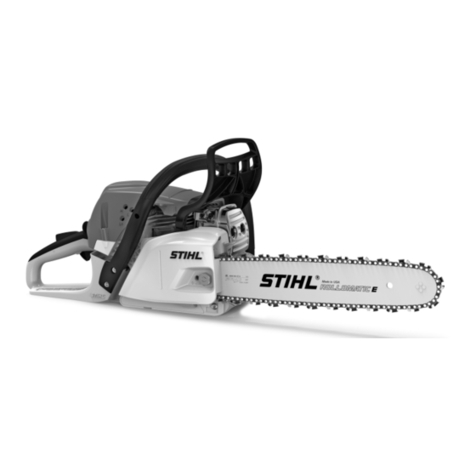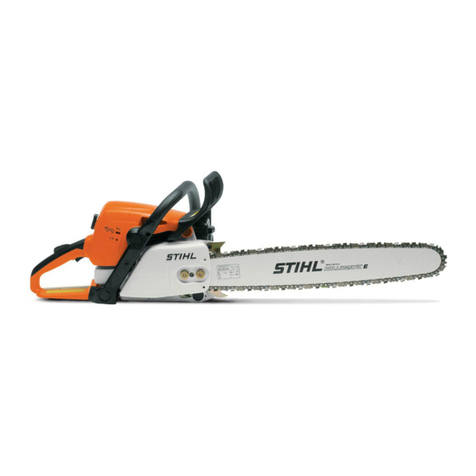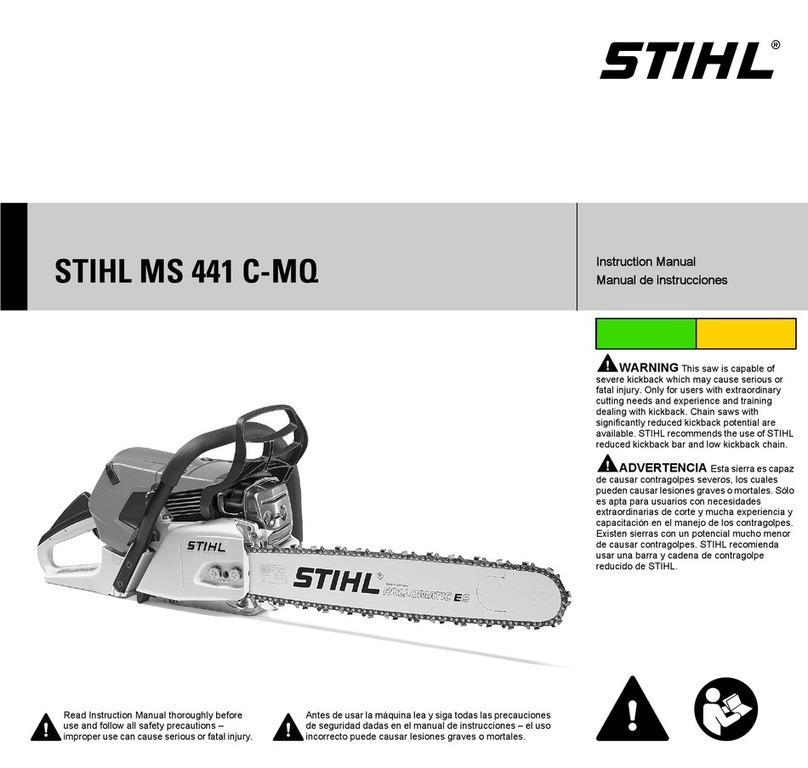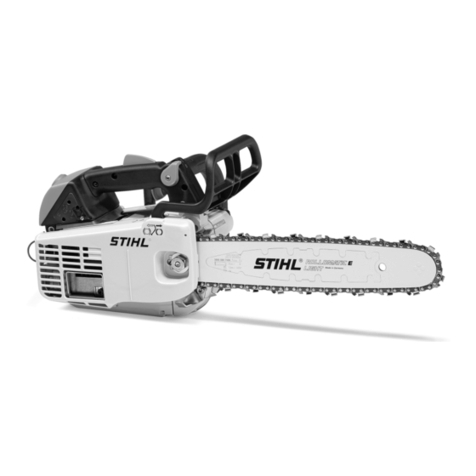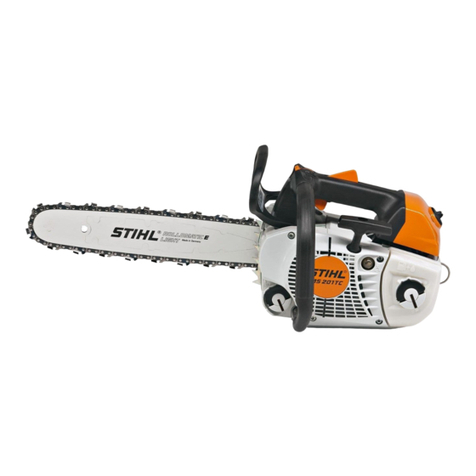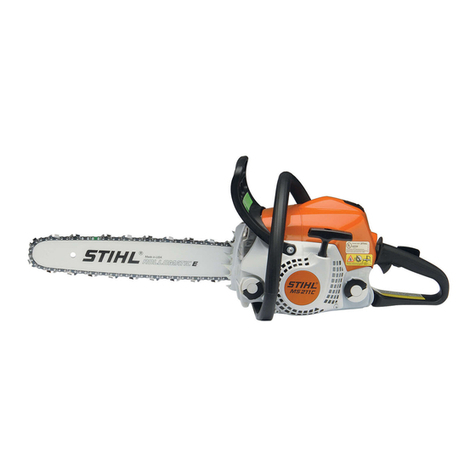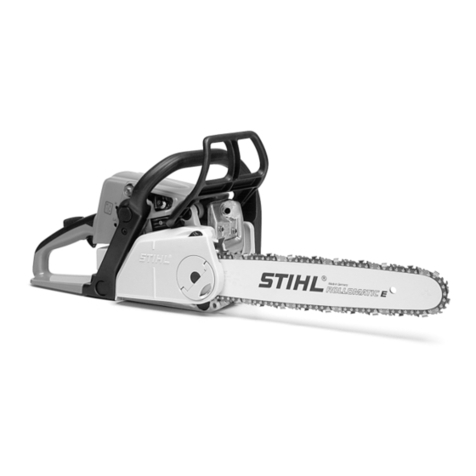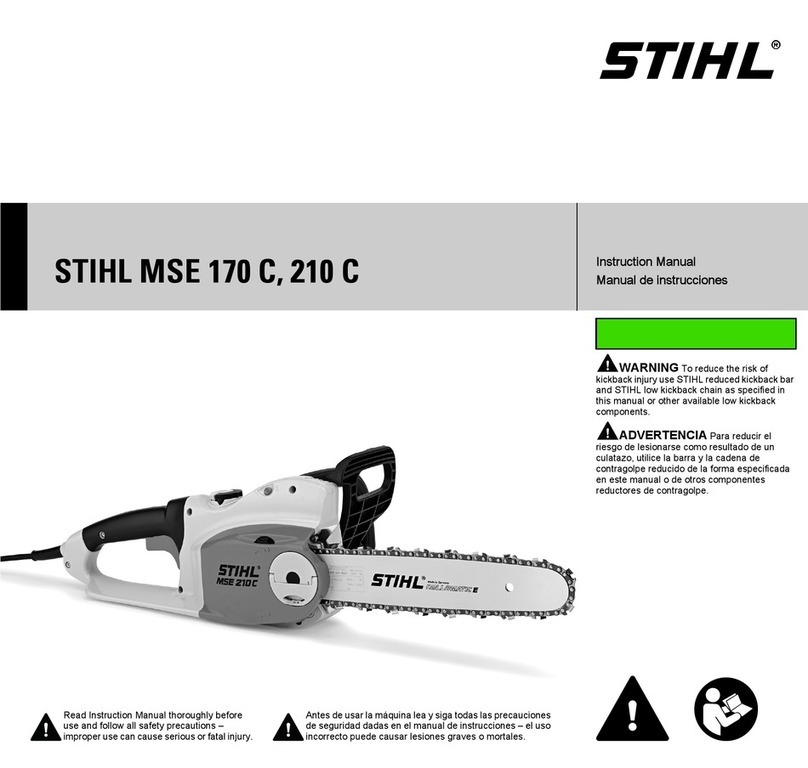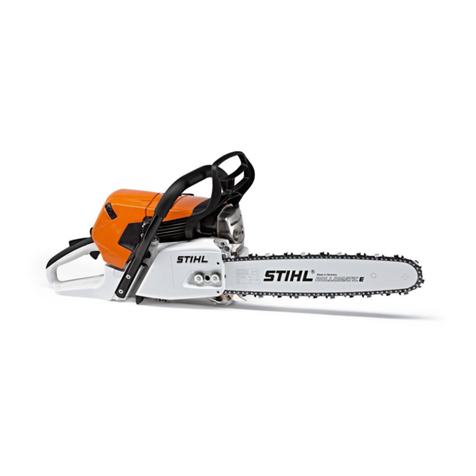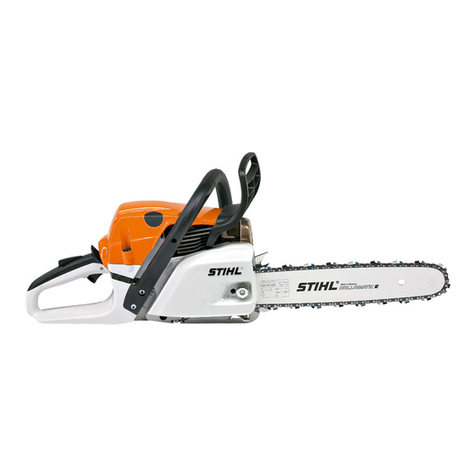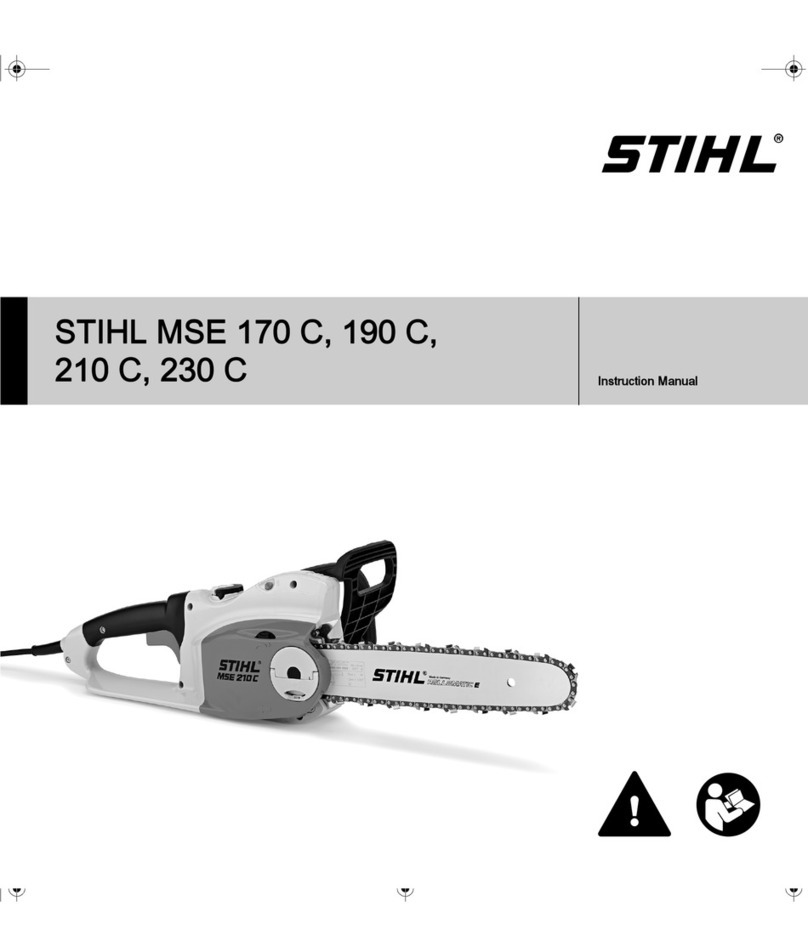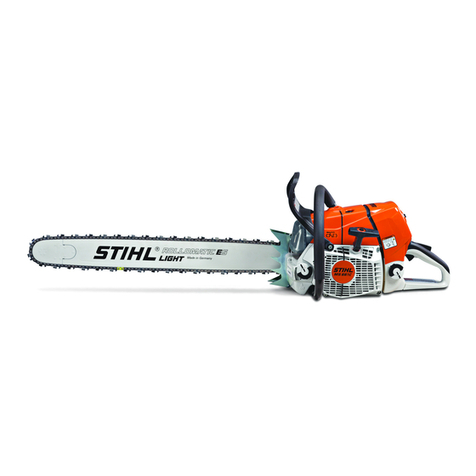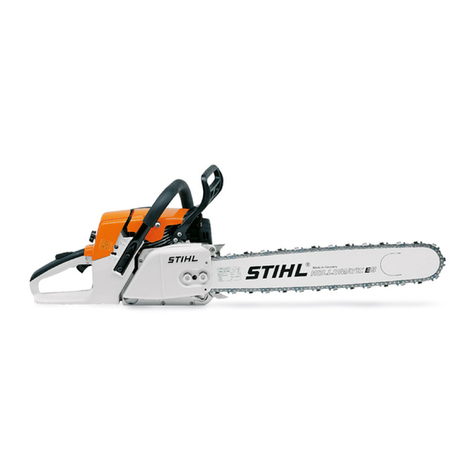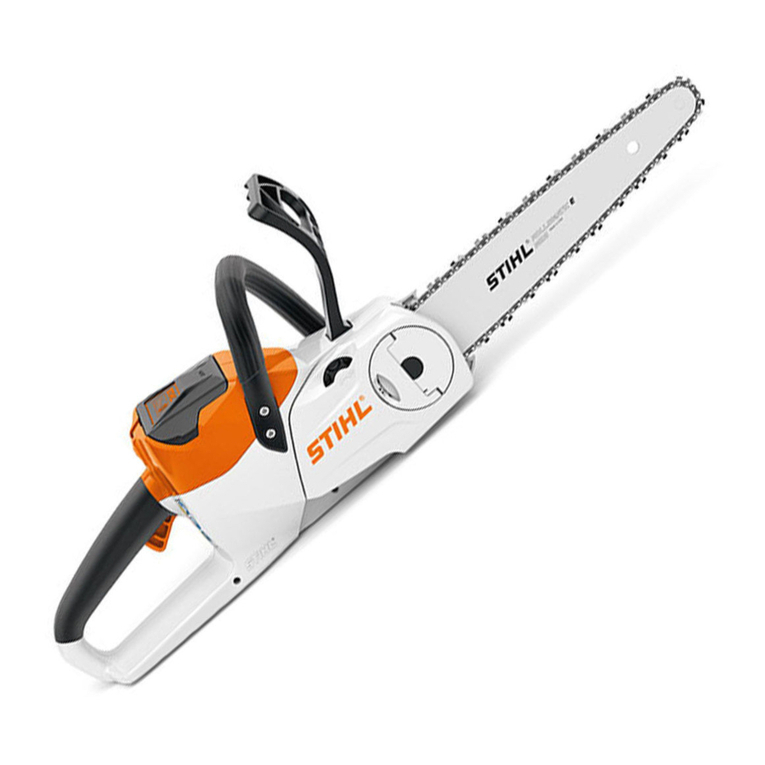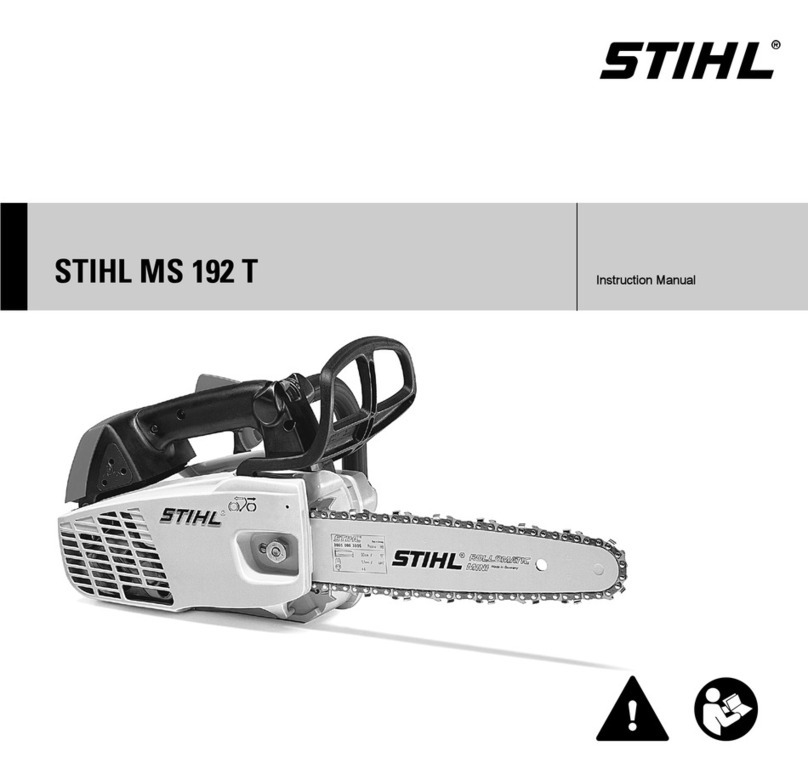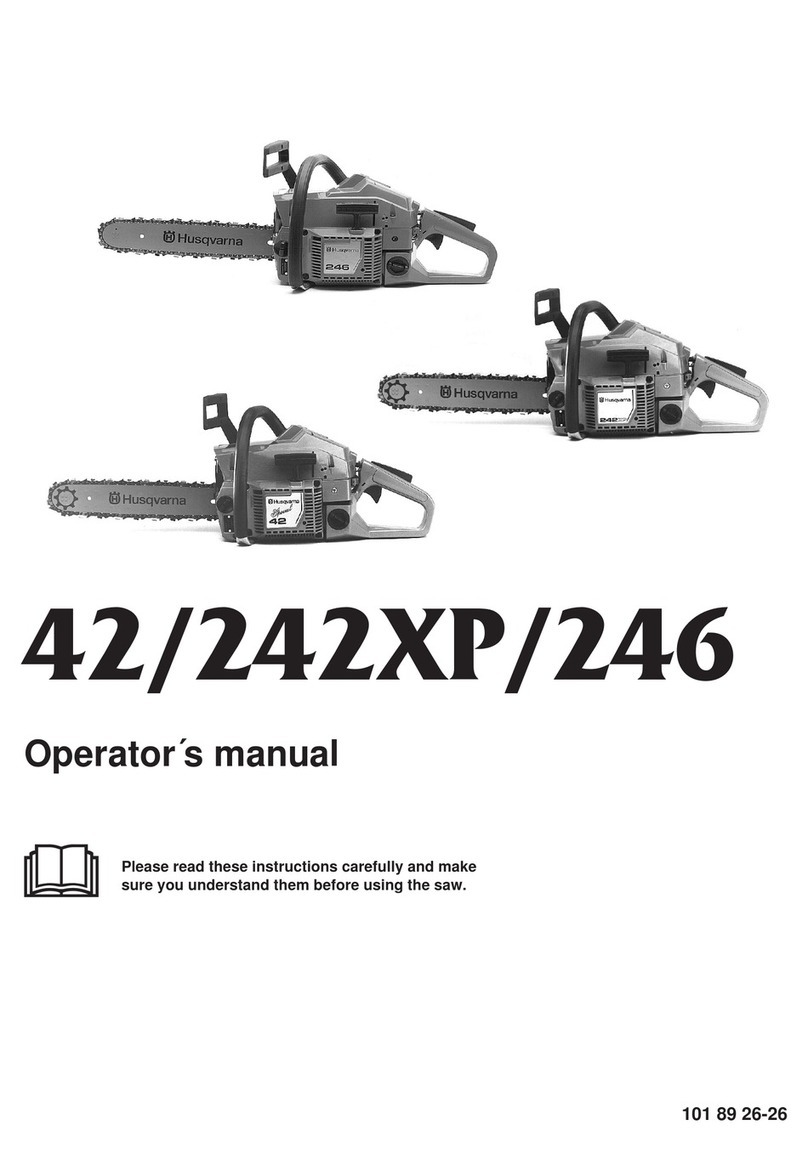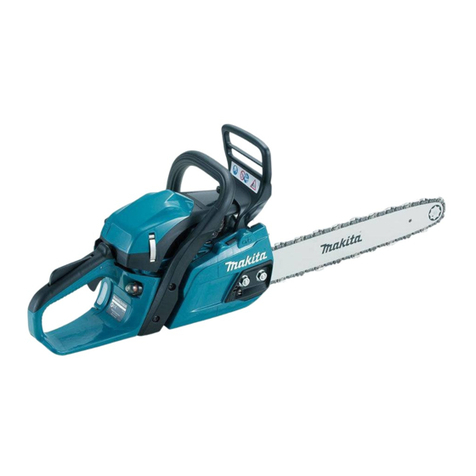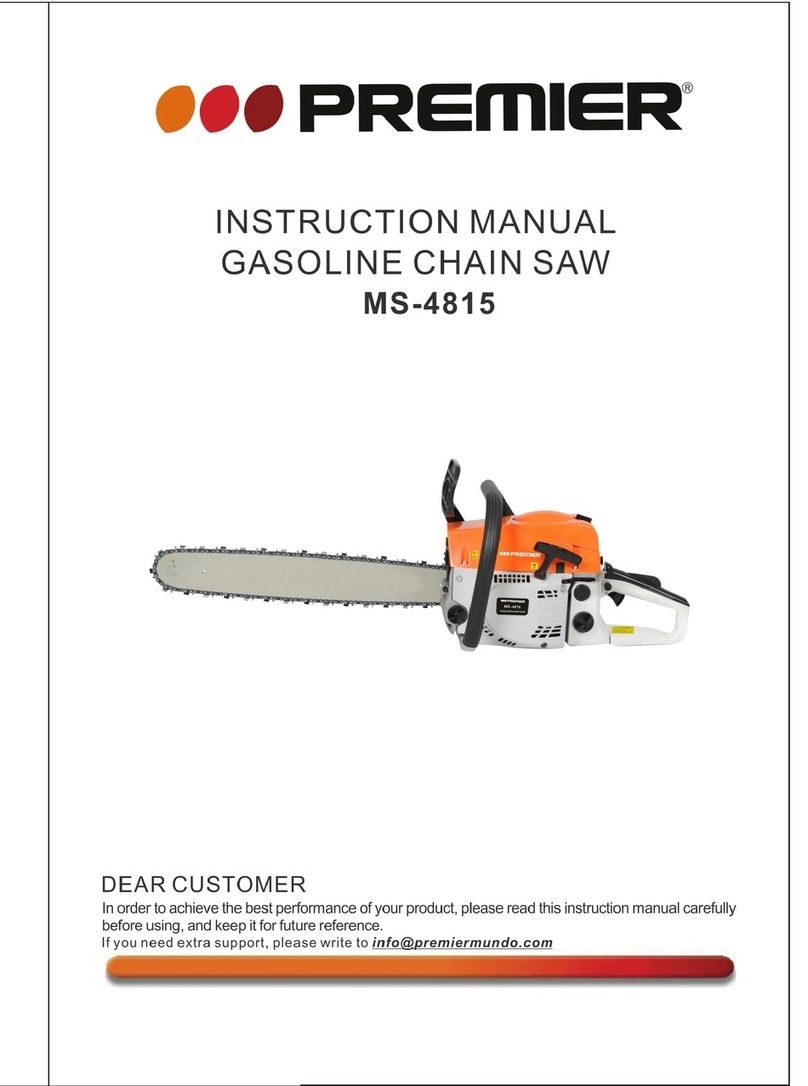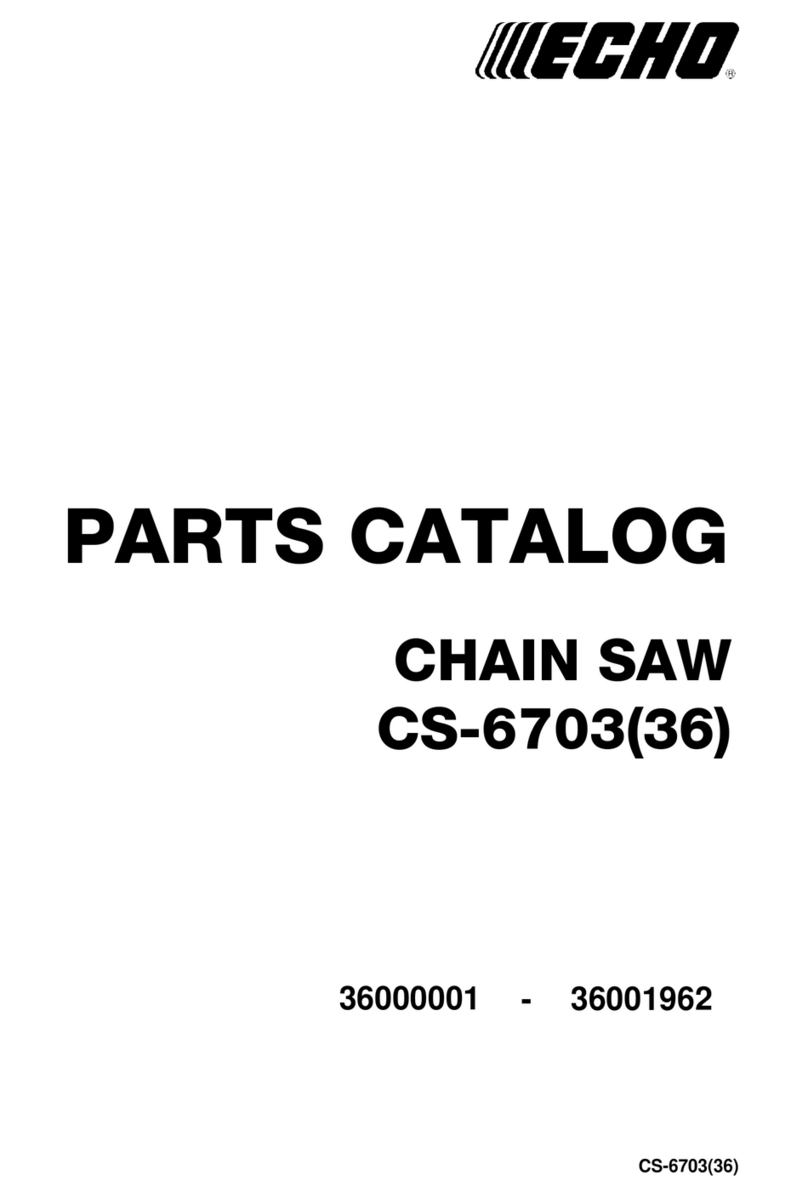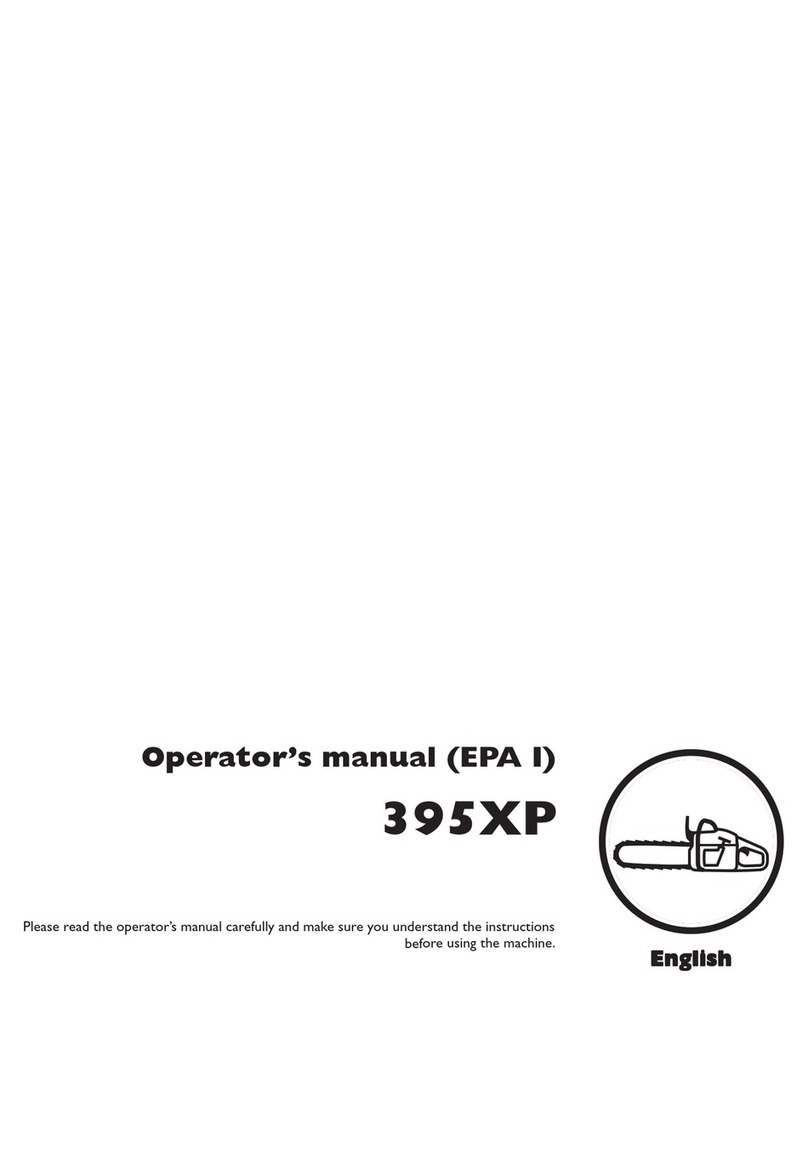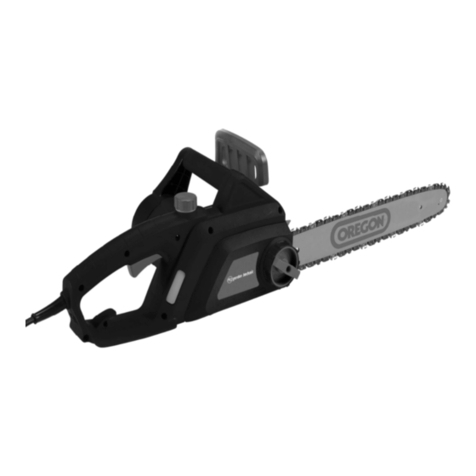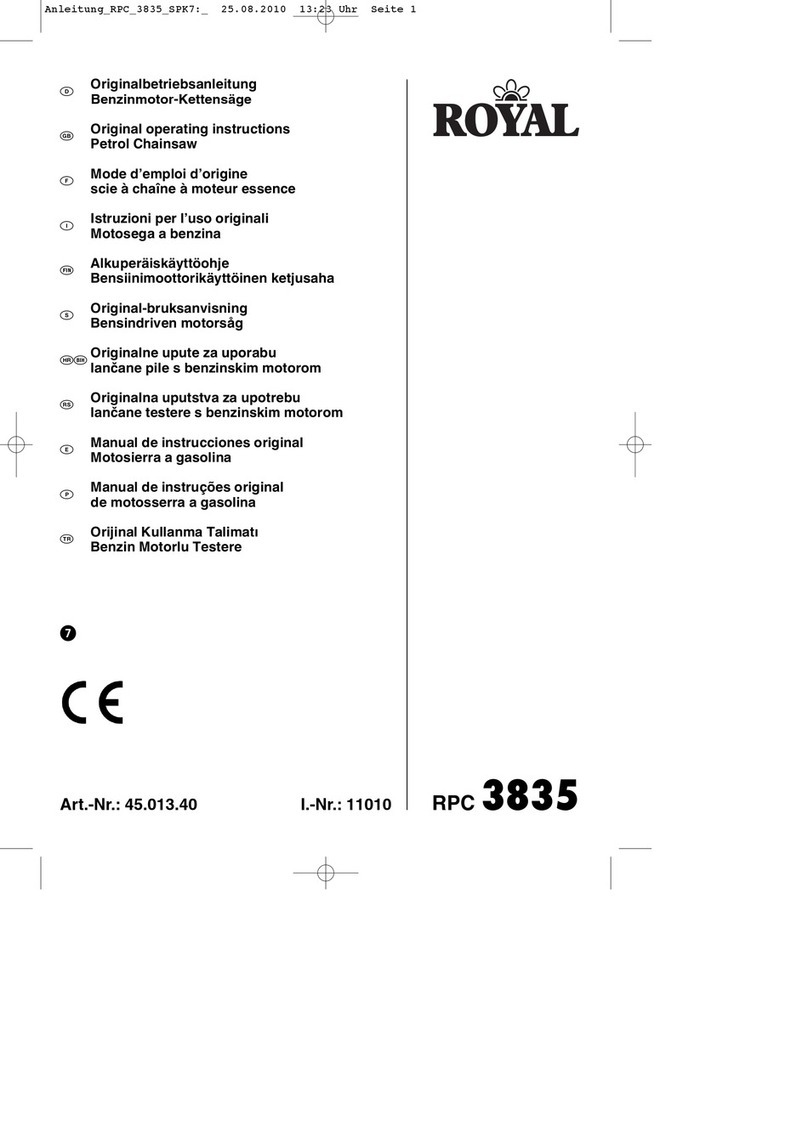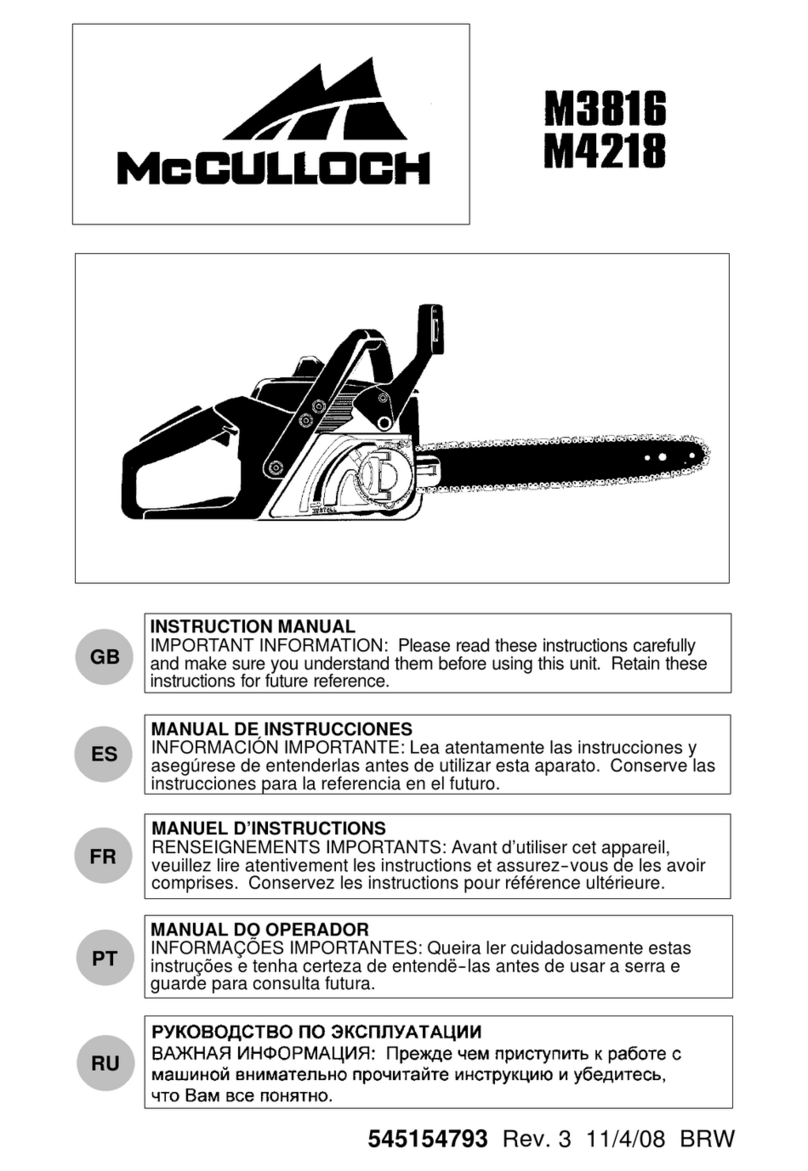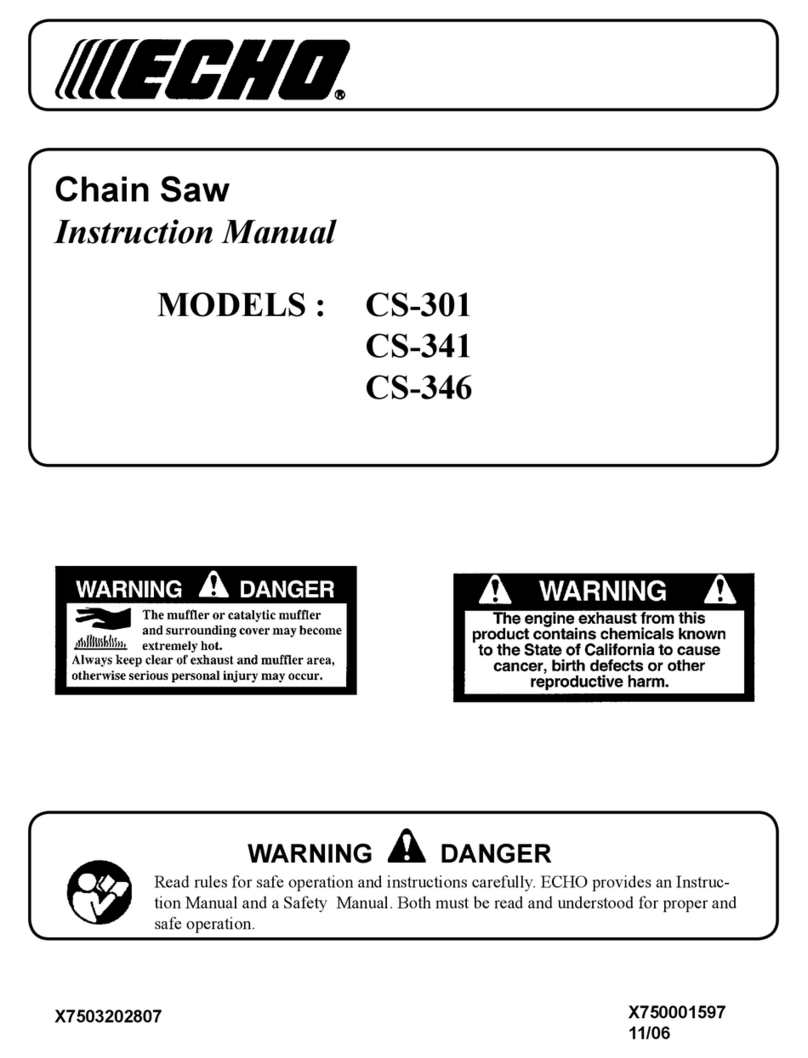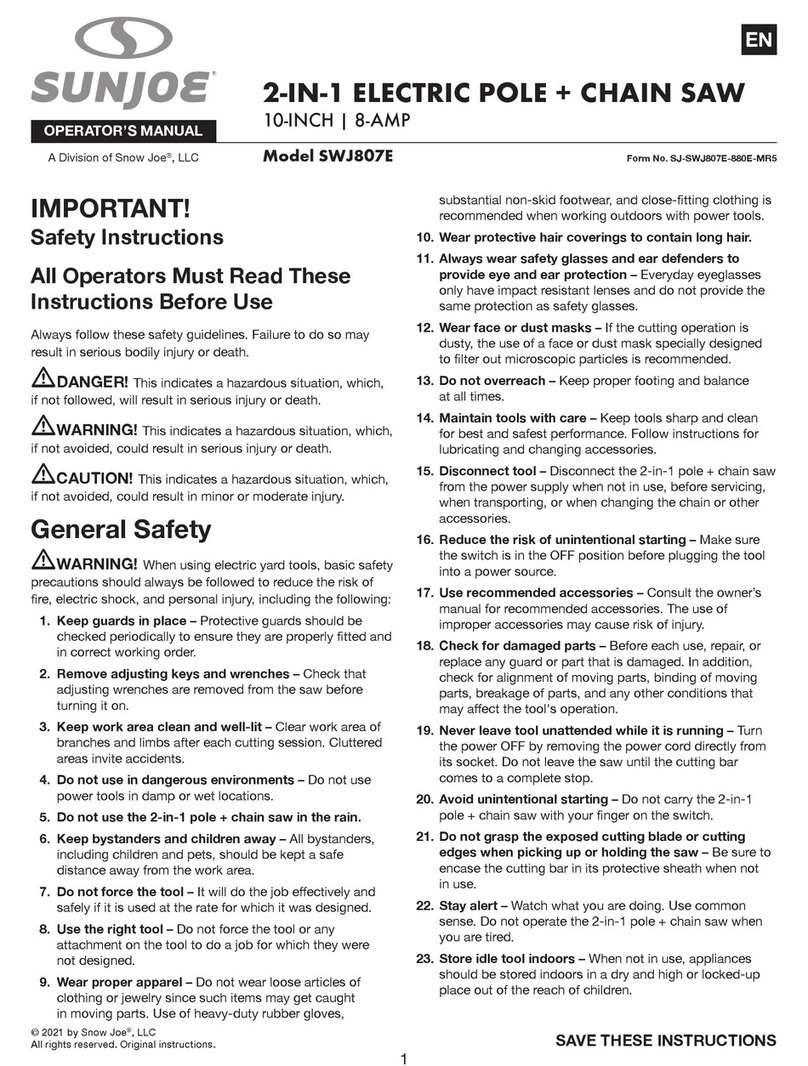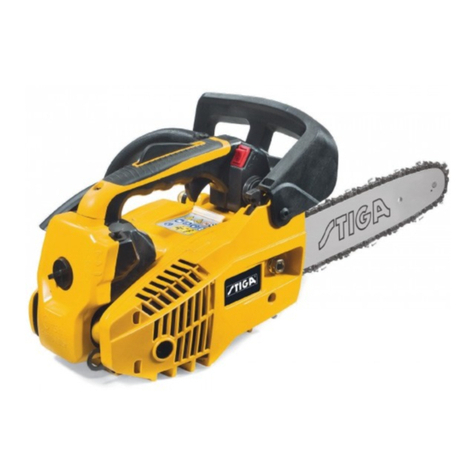
MS 461 R
English
3
The STIHL Rescue Saw has been
specifically designed for use in rescue
operations, e.g., by fire services,
emergency services, disaster services,
etc.
WARNING
The use of this chain saw may be
hazardous. The saw chain has many
sharp cutters. If the cutters contact your
flesh, they will cut you, even if the chain
is not moving.
WARNING
The use of this saw for rescue
operations, even by trained personel,
can be extremely hazardous and may
result in severe or fatal personal injury.
The risk of injury from reactive forces,
fire or explosion, electrocution,
damaged chain and other causes when
employing a chainsaw for these
purposes is substantially increased.
WARNING
The STIHL Rescue Saw may be used
only by personnel who have been
specifically trained for rescue
operations. They must not only be
knowledgeable concerning the correct
use of chainsaws but also able to assess
the additional risks and dangers
associated with emergency situations.
Cutting with a Rescue Saw requires
special working techniques that must be
utilized to reduce the risk of accidents
and injuries to the user, bystanders and
the persons being rescued. It also
requires the use of a certain, specially
designed, carbide-tipped chain
specifically authorized by STIHL for
such purposes.
WARNING
Reactive forces, including kickback, can
be dangerous. Pay special attention to
the section on reactive forces.
Have your STIHL dealer show you how
to operate your chain saw. All safety
precautions that are generally observed
when working with an axe or a hand saw
also apply to the operation of chain
saws. Observe all applicable federal,
state and local safety regulations,
standards and ordinances. When using
a chain saw for logging purposes, for
instance, refer to the OSHA regulations
for "logging operations" at 29 Code of
Federal Regulations 1910.266.
WARNING
Do not lend or rent your chain saw
without the instruction manual. Be sure
that anyone using it understands the
information contained in this manual.
The use of noise emitting chain saws
may be restricted to certain times by
national, state or local regulations.
Cutting any materials other than wood
will decrease the service life of the chain
and may cause irreversible damage to it,
requiring replacement before work with
the saw can be continued. The rescue
community, however, generally accepts
such increased safety and maintenance
requirements in the pursuit of preserving
life and property..
WARNING
Minors should never be allowed to use
this chain saw. Bystanders, especially
children, and animals should not be
allowed in the area where it is in use.
Most of these safety precautions and
warnings apply to the use of all STIHL
chain saws. Different models may have
different parts and controls. See the
appropriate section of your instruction
manual for a description of the controls
and the function of the parts of your
model.
Since this machine can also be used as
a conventional chain saw, warnings and
instructions are included here with
respect to, e.g., the felling and limbing of
trees. There are additional warnings,
however, specifically with respect to the
operation of Rescue Saws. For instance,
Safety Precautions and
Working Techniques
Because a chain saw is a
high-speed, fast-cutting
power tool, special safety
precautions must be
observed to reduce the
risk of personal injury.
It is important that you
read, fully understand
and observe the following
safety precautions and
warnings. Read the
instruction manual and
the safety instructions
periodically. Careless or
improper use may cause
serious or fatal injury.
Save the instruction man-
ual for future reference.
